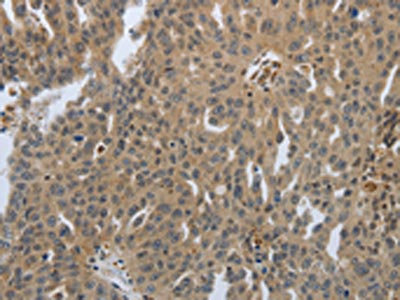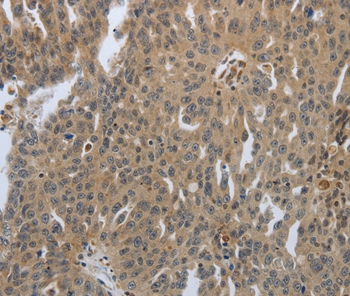
WB analysis of human brain lysate using GTX89669 PTPRT antibody, Internal. Dilution : 0.3microg/ml Loading : 35microg protein in RIPA buffer
PTPRT antibody, Internal
GTX89669
ApplicationsWestern Blot
Product group Antibodies
TargetPTPRT
Overview
- SupplierGeneTex
- Product NamePTPRT antibody, Internal
- Delivery Days Customer9
- Application Supplier NoteWB: 0.3-1microg/ml. *Optimal dilutions/concentrations should be determined by the researcher.Not tested in other applications.
- ApplicationsWestern Blot
- CertificationResearch Use Only
- ClonalityPolyclonal
- Concentration0.50 mg/ml
- ConjugateUnconjugated
- Gene ID11122
- Target namePTPRT
- Target descriptionprotein tyrosine phosphatase receptor type T
- Target synonymsR-PTP-T, RPTP-rho, RPTPrho, receptor-type tyrosine-protein phosphatase T, receptor protein tyrosine phosphatase, receptor-type tyrosine-protein phosphatase rho
- HostGoat
- IsotypeIgG
- Protein IDO14522
- Protein NameReceptor-type tyrosine-protein phosphatase T
- Scientific DescriptionThe protein encoded by this gene is a member of the protein tyrosine phosphatase (PTP) family. PTPs are known to be signaling molecules that regulate a variety of cellular processes including cell growth, differentiation, mitotic cycle, and oncogenic transformation. This PTP possesses an extracellular region, a single transmembrane region, and two tandem intracellular catalytic domains, and thus represents a receptor-type PTP. The extracellular region contains a meprin-A5 antigen-PTP (MAM) domain, Ig-like and fibronectin type III-like repeats. The protein domain structure and the expression pattern of the mouse counterpart of this PTP suggest its roles in both signal transduction and cellular adhesion in the central nervous system. Two alternatively spliced transcript variants of this gene, which encode distinct proteins, have been reported. [provided by RefSeq, Jul 2008]
- Storage Instruction-20°C or -80°C,2°C to 8°C
- UNSPSC12352203




